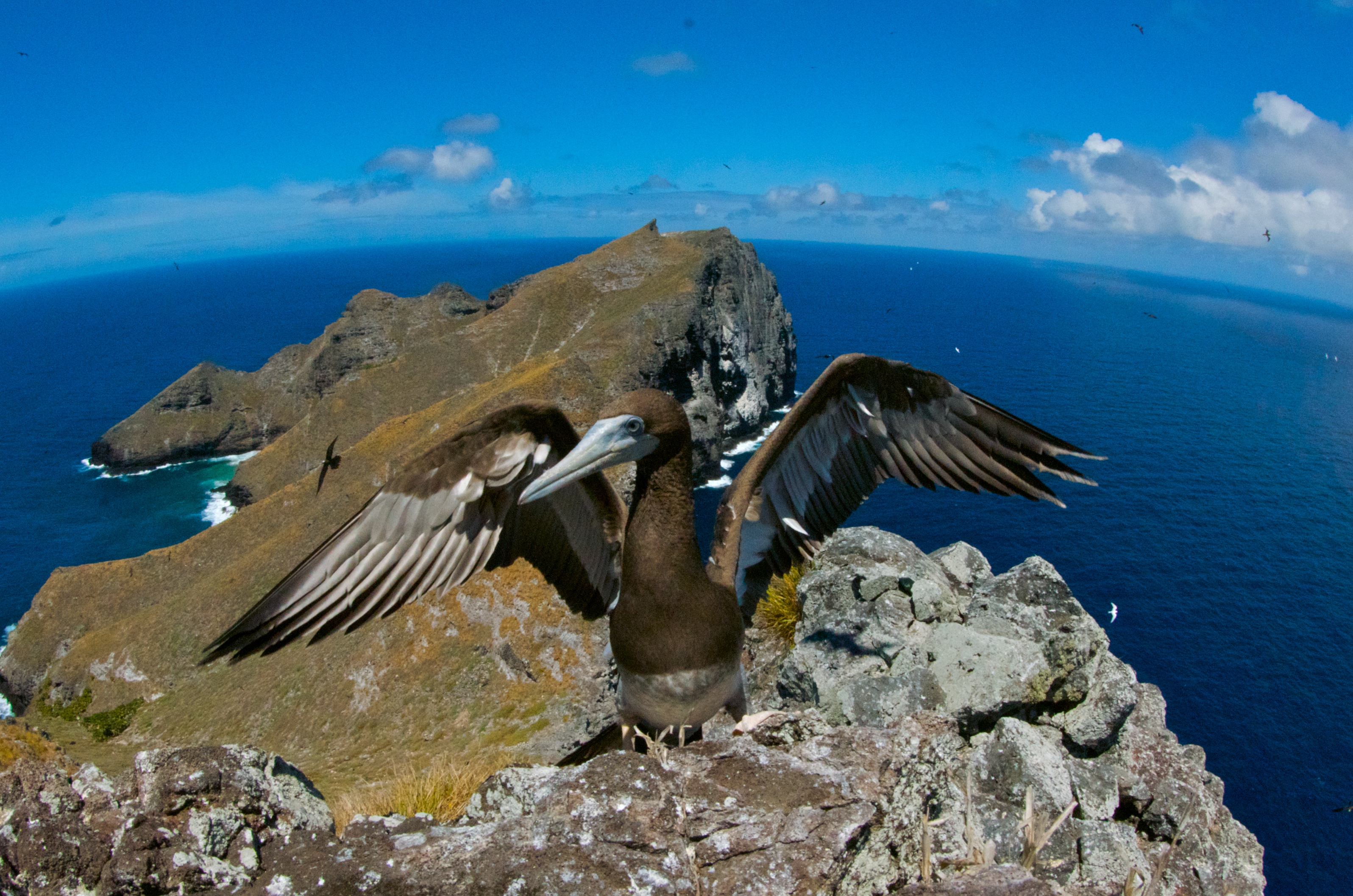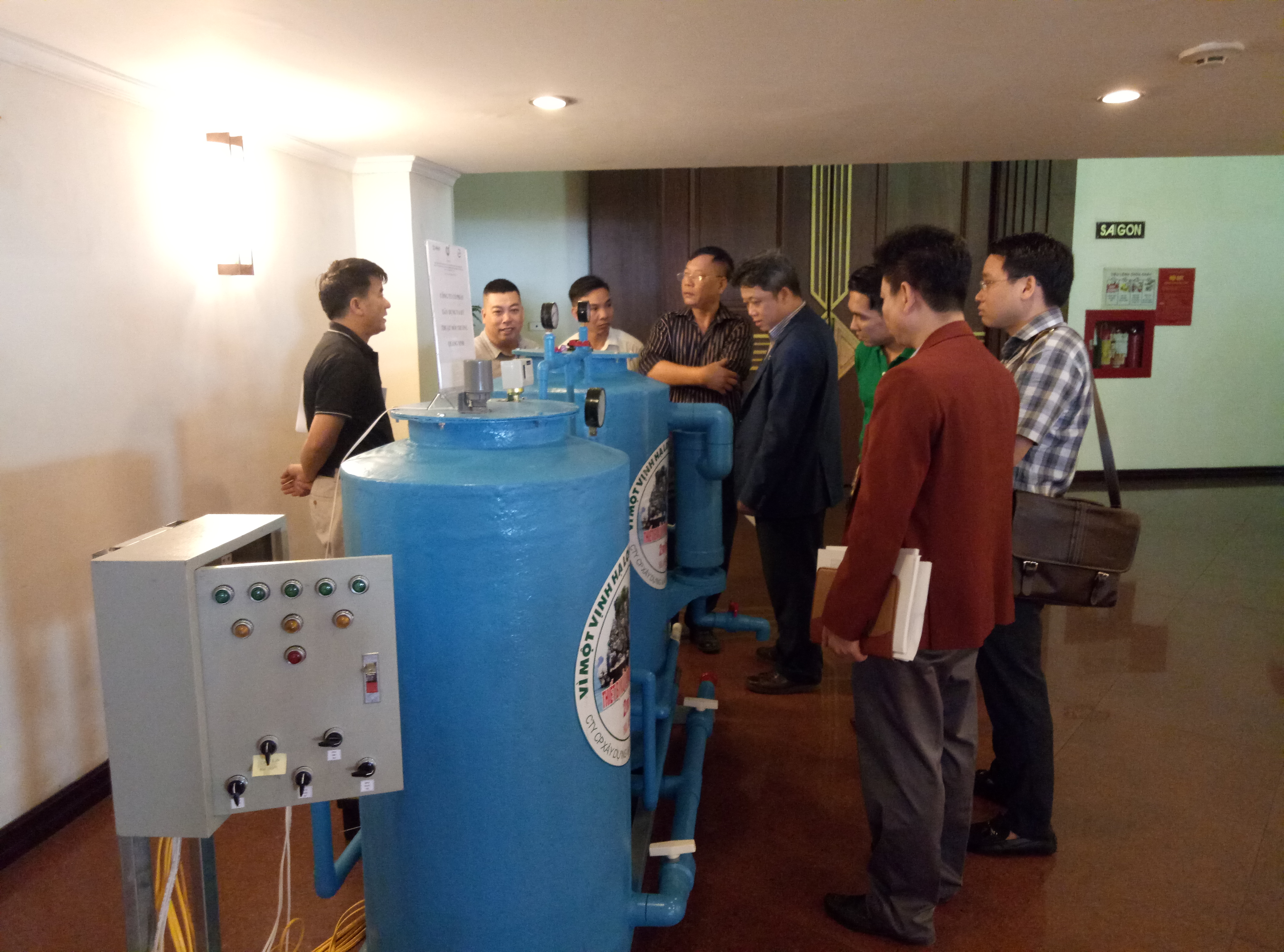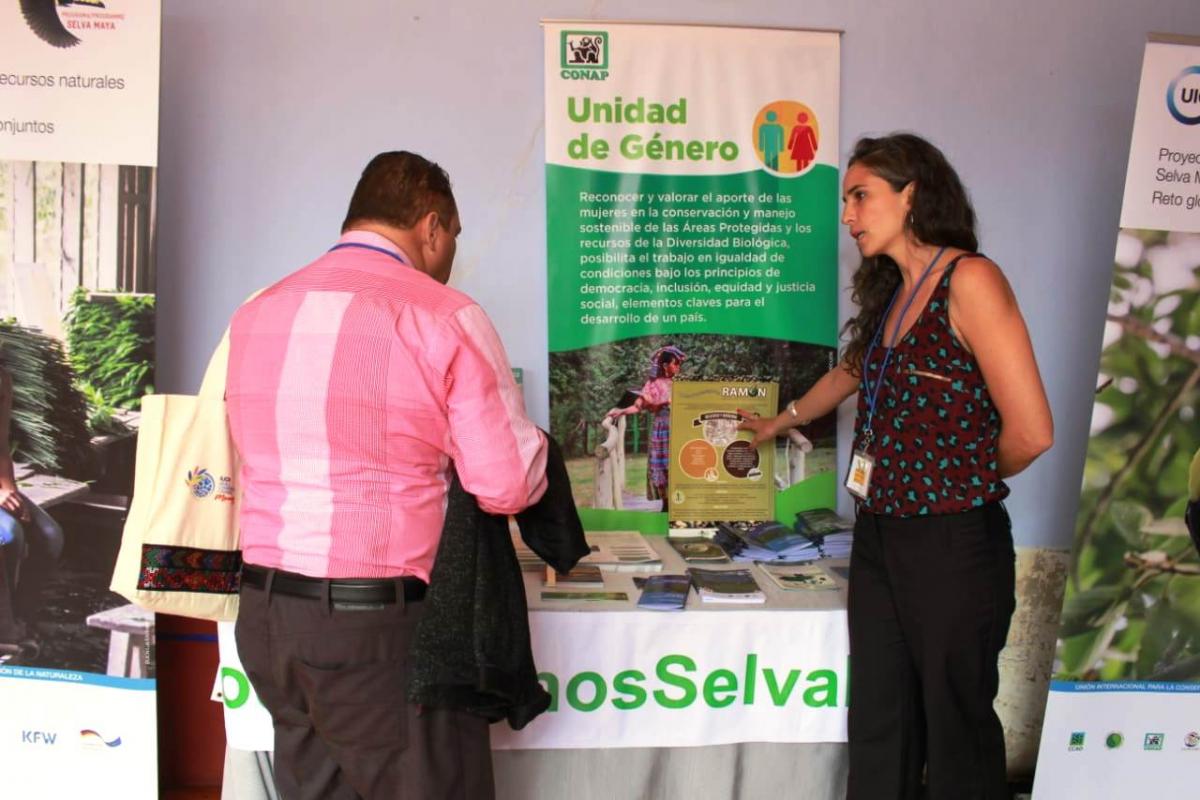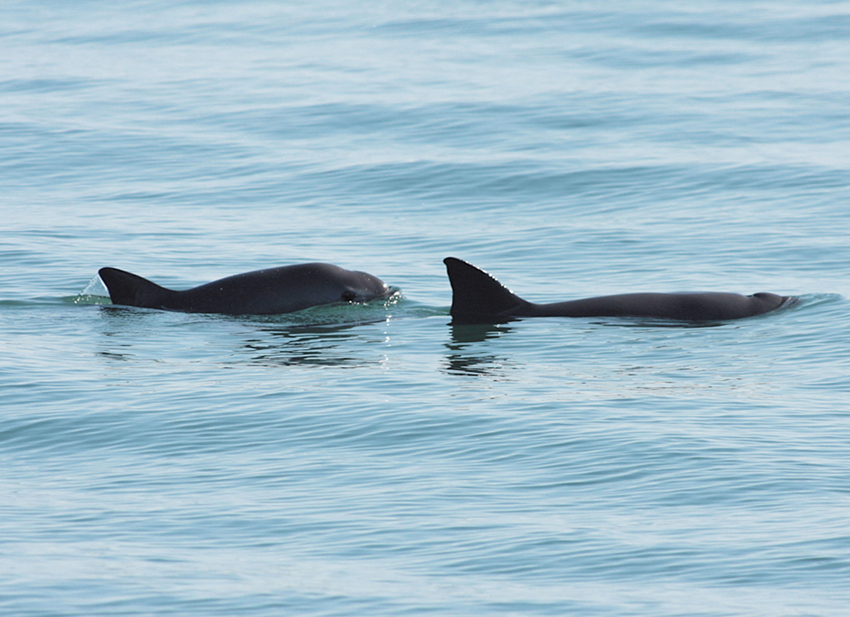Today defines tomorrow: World Heritage as litmus test for action on agreements
This piece by IUCN Director General Inger Andersen originally appeared on World Heritage, the official UNESCO publication from the World Heritage Centre, as part of a special edition on the IUCN World Conservation Congress. It reflects some of the main messages brought by IUCN to the 40th World Heritage Committee meeting, which took place in Istanbul from 10-17 July 2016.

Photo: J Tamelander / IUCN
After the historic agreements on climate change and sustainable development achieved in 2015 at the Paris Climate Conference (COP21) and the United Nations Sustainable Development Summit, few will deny that we are witnessing an extraordinary era. More than ever, we need courage and vision so together we can secure a future that conserves nature while respecting people’s rights – and we cannot overlook the enormous potential of World Heritage in furthering this goal.
The planet is at a crossroads, and the Paris Climate Agreement and the new 2030 Agenda for Sustainable Development show that decision-makers are realising this.
Key decisions by the World Heritage Committee in 2015 are part of this unprecedented momentum, recognising the rights of indigenous peoples and embracing the principle of sustainable development. To stay relevant in the face of global challenges, the World Heritage Convention must not only fulfil its crucial role in safeguarding our most precious sites, but go beyond this to demonstrate and inspire excellence in conservation practice.
In a world affected by climate change, excessive demands for resources, disconnection from nature and growing conflict, World Heritage sites must deliver results or risk losing their value. They must lead with the best of equitable management and sustainable development, showing the intimate links between culture and nature, between respect for rights and nature conservation.
For World Heritage too is at a crossroads. Its success or failure will be a litmus test to determine whether we are meeting the challenges identified in these global agreements.
World Heritage: a unique leadership role
The global recognition granted to natural World Heritage sites represents a clear opportunity for this Convention to take a leadership role in conservation practice. The exceptional places it protects should be models of excellence, showcasing solutions to today’s complex challenges and demonstrating the value of protected areas as one of the best investments for the planet and for people. These sites have an extraordinary potential to demonstrate the successes of conservation to a global community that will increasingly expect concrete results.
And yet, despite their international status and high visibility, natural World Heritage sites are subject to the same threats and pressures faced by protected areas worldwide. Their exceptional values, as well as the benefits and life-supporting services they provide, are too frequently jeopardised by overexploitation of resources and unsustainable changes in landscapes. We must change the dynamics for World Heritage.
IUCN’s World Heritage Outlook – the first global assessment of natural World Heritage – shows that, whereas two-thirds of natural sites are likely to be well conserved over time, one-third face serious threats such as invasive species, impacts of tourism, poaching, dams and logging. This cannot continue – all sites with Outstanding Universal Value deserve the very best care.
The IUCN World Heritage Outlook also shows that climate change is already affecting thirty-five natural sites and we predict it will become the most widespread threat to World Heritage sites in the future. As the World Heritage Committee has recognised, this means we must act on existing threats in order to increase the resilience of sites most at risk. This implies putting Outstanding Universal Value first and investing effort into effective management. In short, successful protection of World Heritage sites needs to be unquestionable if the Convention is to maintain its credibility.
It is precisely the Convention’s credibility that IUCN members called into question at the 2012 IUCN World Conservation Congress, and asked for it to be strengthened. Recent years have seen increasing concern regarding decisions undermining the technical advice provided by the Advisory Bodies to the World Heritage Committee, ICCROM, ICOMOS and IUCN, in collaboration with the World Heritage Centre. How long can the World Heritage List grow before it loses the special status that comes from exclusivity? How well can it represent our common heritage when an overwhelming majority of sites are from the wealthiest regions? A founding principle of World Heritage is that only the most deserving places, from all regions, should be listed.
To maintain credibility, a shift in focus from quantity to quality must take place. This means that sites put forward for nomination should be clearly identified as gaps in the World Heritage List and receive advice from the earliest stages on how to meet the standards of the Convention. It also means that the management of existing World Heritage sites should be central to the Convention’s focus.
New foundations for a credible Convention
The leadership potential of the World Heritage Convention will only be realised if we make the conservation of these extraordinary places a global, joint responsibility shared by States Parties, civil society, local communities and indigenous peoples, and the private sector. In 2015, the formal recognition of the rights of indigenous peoples, and in particular the importance of their free, prior and informed consent in the World Heritage nomination process, was included in the Operational Guidelines for the Implementation of the World Heritage Convention – a point that IUCN has strongly advocated for years.
As noted in the Promise of Sydney – the outcome document of the 2014 IUCN World Parks Congress – civil society and other non-state partners need to be recognised as full actors in the way the Convention works. Only through this engagement will World Heritage achieve lasting conservation, and contribute fully to society, to the realisation of rights, to poverty eradication and to achieving the Sustainable Development Goals.
A newly adopted policy that integrates a sustainable development perspective into World Heritage processes is also crucial, as it ensures that the Convention has a lasting positive impact on human well-being. This policy sets the fundamental need for the protection of World Heritage in a wider social context. It offers the means for the Convention to increase its relevance and address existing gaps. Particularly welcome is the recognition that rights are a central issue, as well as gender.
The 229 sites currently listed as natural World Heritage are not just superb scenic areas; they support people and economies by providing jobs and sources of livelihoods. Two-thirds of these sites are essential water sources and about half help to prevent natural disasters such as floods and landslides. And many of them play a crucial role in helping species to survive the effects of climate change by providing refuge or enabling dispersal into large, interconnected landscapes. These values need to be recognised and protected.
For example, the total value of ecosystem services provided by Spain’s Doñana National Park is estimated at €570 million annually. With its high annual rainfall, Dong Phayayen-Khao Yai Forest Complex is a vitally important watershed for Thailand, feeding five of the country’s major rivers.
World Heritage sites reflect our relationship with nature, the interconnections between humanity and the environment. They are a part of who we are, carrying a cultural and, often, spiritual dimension through ages and civilisations. The Russian Federation’s Golden Mountains of Altai, for example, are home to one of the world’s oldest living shamanistic traditions, which shapes people’s relationships with each other and with the landscapes they inhabit. In Australia’s Kakadu National Park, World Heritage values recognise 65,000 years of living Aboriginal culture that has sustained the park’s globally important landscape and wildlife.
The interaction between culture and nature underpins the whole of the World Heritage Convention. Conserving nature may seem an obvious point in natural World Heritage sites; but it is also relevant in cultural sites where traditional land use coexists with biodiversity and urban green spaces contribute to human health. Equally, in conserving nature, our work needs to embrace people’s needs, their cultures and their rights.
Time and again World Heritage sites have pioneered conservation practice, with inspiring success. Last year, we saw a remarkable achievement with the removal of Colombia’s Los Katíos National Park from the List of World Heritage in Danger. Such an example demonstrates the effectiveness of the Convention’s mechanisms in stimulating necessary action, when there is political will to use them for their intended purposes.
Hawaii 2016: moving agreements into action
To harness this potential, we must now move 2015’s historic agreements into action.
The 2016 IUCN World Conservation Congress (Hawaii, 1–10 September 2016) will open the path to making the global climate agreement and Sustainable Development Goals reality. IUCN is in a strong position to deliver a Congress that will help to translate these commitments into action, as well as the new World Heritage policies on sustainable development and indigenous rights. This will be the main legacy of Hawaii.
IUCN has a duty to show the whole world that nature is key to finding solutions to the fundamental challenges we face: that for the ambitious promises made in 2015 to become reality, nature must be at the heart of the answer. In performing this duty, IUCN speaks as the world’s largest conservation union, uniquely composed of government and civil society member organisations, and counting thousands of leading scientists, specialists and global leaders across continents and cultures. With our diverse membership and the depth our science and knowledge, we speak for nature, and we must speak for the most vulnerable, for communities, and for their rights. The participation of people of different backgrounds from around the world lends credibility and weight to the outcomes of the IUCN Congress.
Throughout its sixty-eight-year history, IUCN has brought the expertise and influence of its members to bear on the most pressing conservation issues, often ahead of their time and with results that steer the course of humanity’s relationship with this planet for generations. The issue of climate change, for example, was raised by IUCN members in the 1960s, and in 1980, they pioneered discussion on ‘sustainable development’, introducing the phrase into the conservation discourse years before it became mainstream.
Over the years, some 1,200 IUCN resolutions and recommendations have helped to shape global conservation policy as well as action on the ground. The IUCN Congress has now grown to be the world’s largest and most democratic regular conservation event. And with the importance of nature securing unprecedented recognition in 2015, it takes on a new level of global significance in 2016.
IUCN’s landmark achievements include the World Heritage Convention. 2016 marks fifty years since the phrase ‘World Heritage’ was first articulated at what was then known as IUCN’s General Assembly – coincidentally by a member organisation from the United States, host of this year’s Congress. In an address entitled ‘New Perspectives on Conservation for the Years Ahead’, Joseph L. Fisher, then President of Resources for the Future (US non-profit research organisation), spoke of
‘a Trust for the World Heritage that would be responsible to the world community for the stimulation of international cooperative efforts to identify, establish, develop, and manage the world’s superb natural and scenic areas and historic sites for the present and future benefit of the entire world citizenry. Here is another magnificent opportunity for IUCN to lead the way.’
IUCN went on to prepare the first draft of the World Heritage Convention, which served as the basis for discussions and was redrafted in 1972 in collaboration with UNESCO. We can proudly say that this is now one of the world’s most widely adopted conventions.
As an international conservation instrument endorsed by almost every country, the World Heritage Convention is in a privileged position to connect the decisions of the international community with conservation work on the ground. It has the power to inspire action that the world can look up to.
World Heritage is at a crossroads: the path we choose is a collective responsibility we all share. As a union of governmental and non-governmental members, IUCN is committed to harnessing the support needed to achieve excellence in World Heritage conservation. The IUCN World Conservation Congress in Hawaii will provide the opportunity to take action together.
Fifty years after the idea of a World Heritage Trust was born, an idea put into action and supported by a tremendous sense of collective commitment and responsibility, we cannot lower our expectations.



